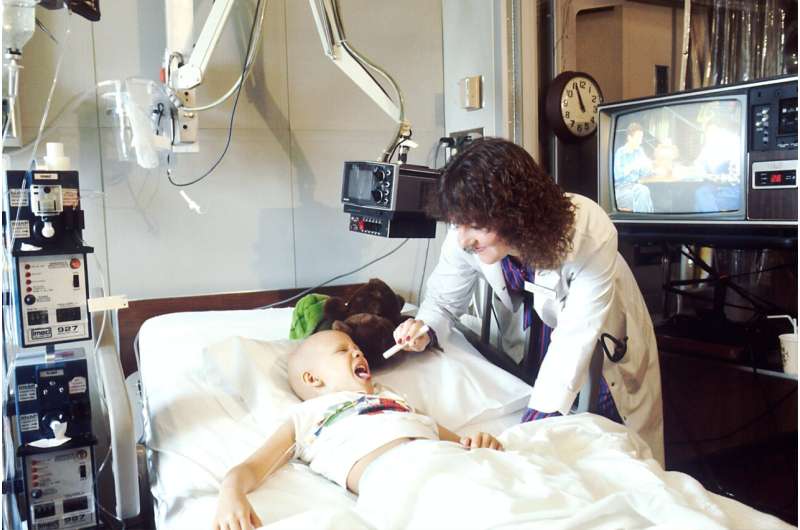Credit: Unsplash/CC0 Public Domain
Childhood cancer rates have been rising slightly for the past few decades, and about 10,470 children in the U.S. under the age of 15 will be diagnosed with cancer in 2022, according to the American Cancer Society.
September is Childhood Cancer Awareness Month, which makes this a good time to learn about three rare types of cancers in children: retinoblastoma, rhabdomyosarcoma and Wilms' tumor.
Retinoblastoma
Retinoblastoma is a rare form of eye cancer that begins in the retina. It is the most common form of cancer affecting the eye in children, and it may occur in one or both eyes. Retinoblastoma most commonly affects young children, but it can occur in adults.
Because retinoblastoma mostly affects infants and small children, symptoms aren't common.
Signs you may notice include:
- A white color in the pupil when light is shone in the eye, such as when someone takes a flash photograph of the child.
- Eyes that appear to be looking in different directions.
- Poor vision.
- Eye redness.
- Eye swelling.
Treatment for your child's retinoblastoma will depend on the size and location of the tumor, whether the cancer has spread to areas other than the eye, your child's overall health, and your preferences. Treatment can include chemotherapy, radiation therapy, laser therapy, cryotherapy, and surgical removal of the eye. The goal of treatment is to cure the cancer. Whenever possible, health care professionals choose treatments that won't result in removal of the eye or loss of vision.
Rhabdomyosarcoma
Rhabdomyosarcoma is a rare type of cancer that forms in soft tissue—specifically skeletal muscle tissue or sometimes hollow organs, such as the bladder or uterus. It can occur at any age, but it most often affects children.
Signs and symptoms of rhabdomyosarcoma depend on where the cancer is located.
If the cancer is in the head or neck area, signs and symptoms can include:
- Headache.
- Bulging or swelling of the eyes.
- Bleeding in the nose, throat or ears.
If the cancer is in the urinary or reproductive system, signs and symptoms can include:
- Trouble urinating and blood in the urine.
- Difficulty with bowel movements.
- A mass or bleeding in the vagina or rectum.
If the cancer is in the arms or legs, signs and symptoms can include:
- Swelling or a lump in the arm or leg.
- Pain in the affected area, though sometimes there is no pain.
Treatment for your child's rhabdomyosarcoma will depend on the location of the cancer, the size of the tumor, whether the cells are aggressive, and whether the cancer is confined to one area or has spread to other areas of the body. Treatment usually involves a combination of chemotherapy, surgery and radiation therapy.
Wilms' tumor
Wilms' tumor, also called nephroblastoma, is a rare kidney cancer that primarily affects children. The disease most often affects children ages 3 to 4 and becomes much less common after age 5. Wilms' tumor most often occurs in just one kidney, though it can sometimes be found in both kidneys at the same time.
Signs and symptoms of Wilms' tumor vary widely, and some children don't show any obvious signs. However, most children with Wilms' tumor experience one or more of these signs and symptoms:
- An abdominal mass you can feel.
- Abdominal swelling.
- Abdominal pain.
Other signs and symptoms can include:
- Fever.
- Blood in the urine.
- Nausea, vomiting or both.
- Constipation.
- Loss of appetite.
- Shortness of breath.
- High blood pressure.
Treatment for Wilms' tumor usually involves surgery and chemotherapy, and sometimes radiation therapy. Treatments may vary by the stage of the cancer. Because this type of cancer is rare, your child's health care professional may recommend that you seek treatment at a children's cancer center that has experience treating this type of cancer.
©2022 Mayo Clinic News Network.
Distributed by Tribune Content Agency, LLC.























